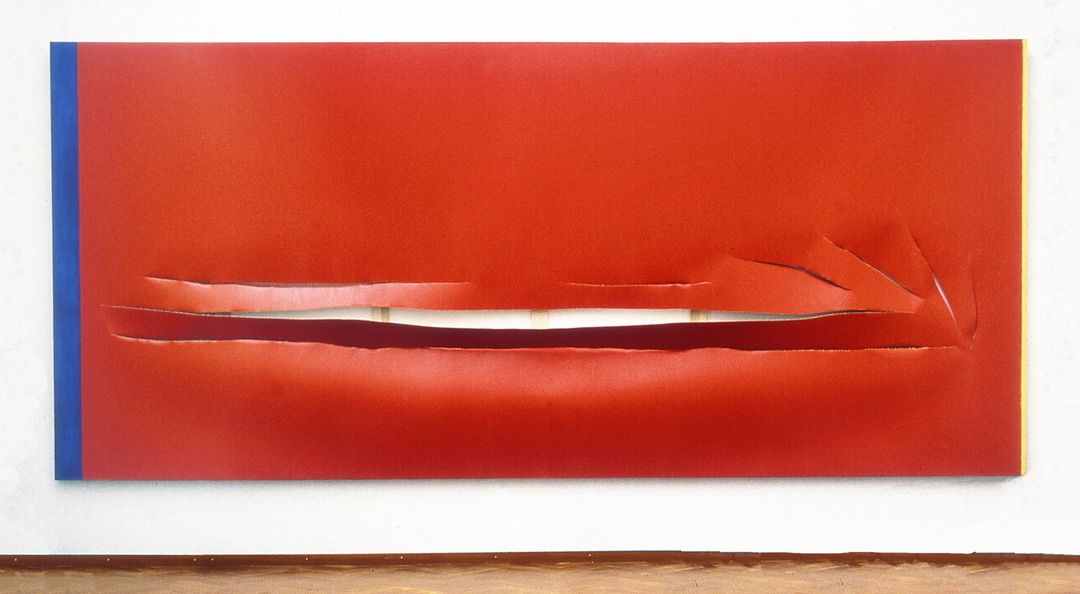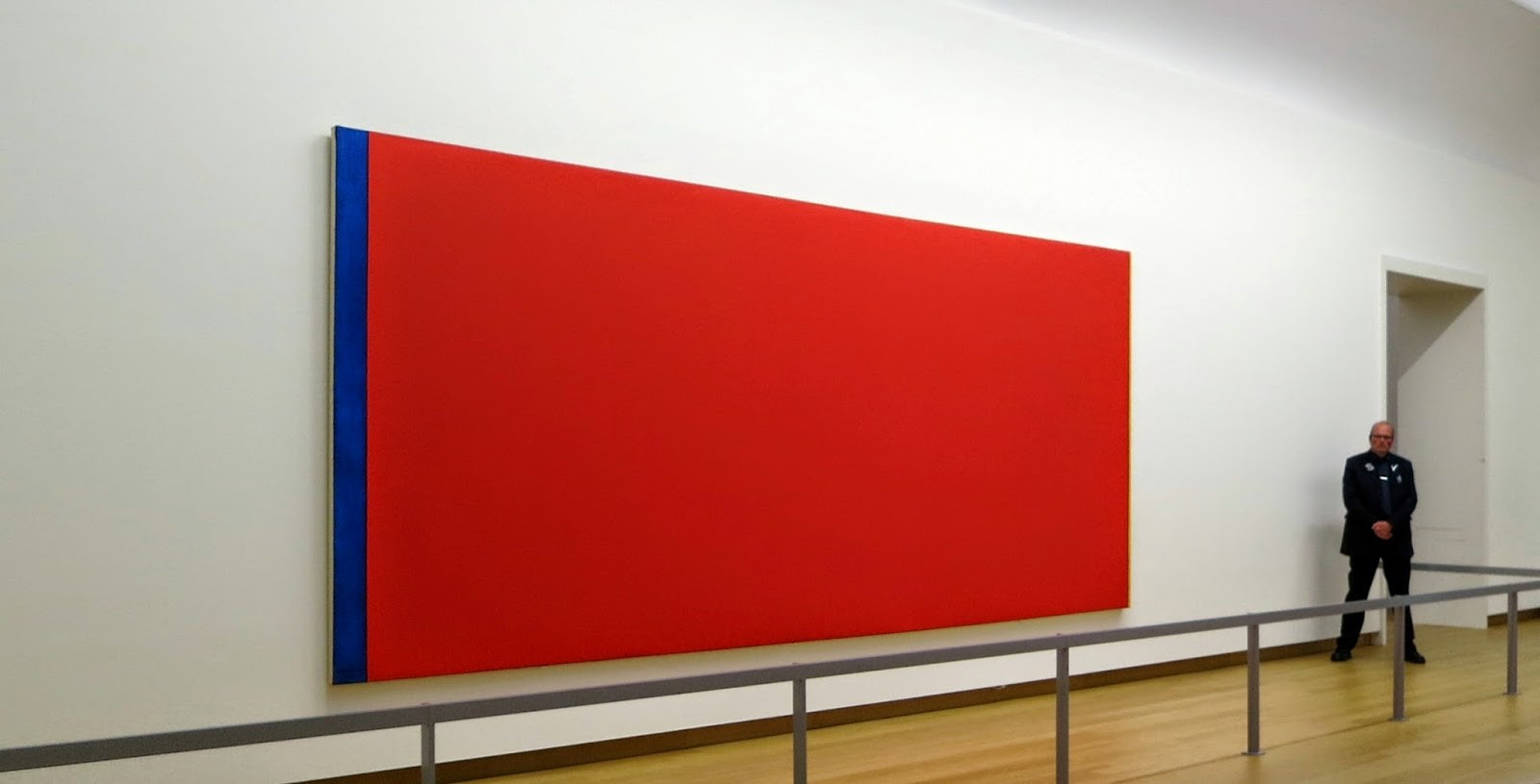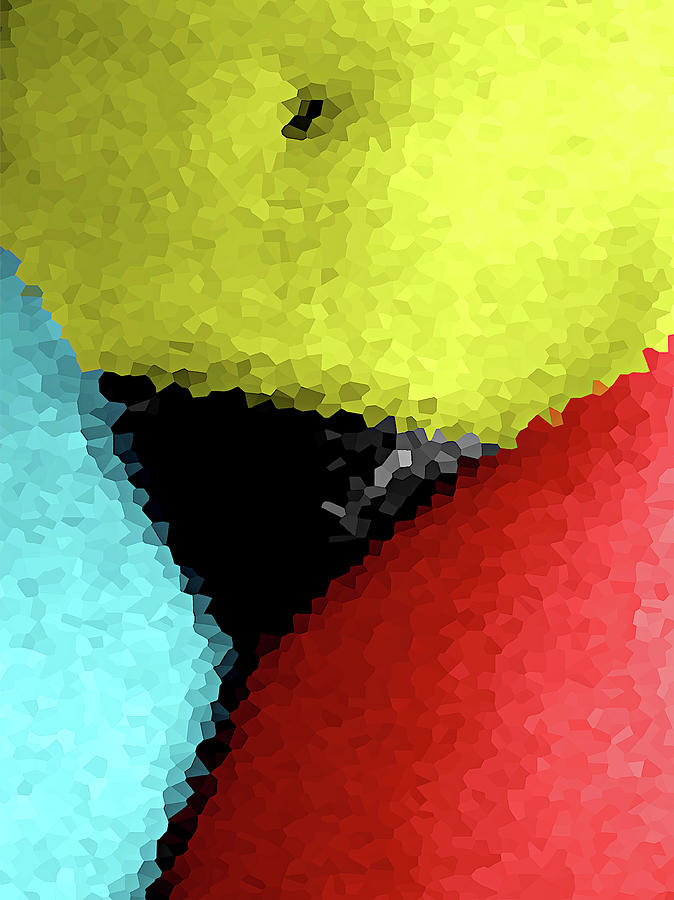
Barbara Visser The End of Fear
He painted his most famous work, Guernica (1937), in response to the Spanish Civil War; the totemic grisaille canvas remains a definitive work of anti-war art. At auction, a number of Picasso's paintings have sold for more than $100 million. The indefatigable artist has been the subject of exhibitions at the world's most prestigious.

Peter Raue über "Who's Afraid of Red, Yellow and Blue IV" von Newman YouTube
Who's Afraid of Red, Yellow & Blue? Dates: 18 February - 30 May 2010. Artists: Peter Booth, Mike Brown, Peter Clark, Juan Davila, Lesley Dumbrell, Dale Frank, Elizabeth Gower, Michael Johnson, Tim Johnson, Rose Nolan and Scott Redford. Curator: David H. Thomas. Can colour still be radical in its own right? This exhibition features works from.

Newman Who’s Afraid of Red,Yellow and Blue Rob Scholte Museum
Who's Afraid of Red Yellow and Blue: Directed by Jeffrey Collins. In 2011 Painter Jeffrey Collins set about making his own version of his favorite art documentary; Painters Painting. 40 years after the original, he has met some of the best underground artists in the NY art scene and documented their art. Traveling alone, filming alone, editing alone, this is truly one persons passion project.

Who's afraid of red, yellow and blue 100 jaar De Stijl in het Stedelijk Museum agreylady
Maurizio Nannucci Who's Afraid of Red, Yellow and Blue. Museum. Museo del Novecento, Milano. Artist. Maurizio Nannucci Firenze, 1939. Date. 1970 circa. Medium. neon colorato, opera in sette parti. Size. dimensioni variabili. Legal status. deposito dell'artista, 1987. Request image Your e-mail *

Who's Afraid of Red Yellow and Blue 3 by Lydia Mitchell on Dribbble
Painters have every reason to be afraid of red, yellow, and blue—not so much, as Newman seemed to believe, because Mondrian, the "purists, neo-plasticists and other formalists," have made them into their exclusive domain, but because the radical, purist but antiformalist statement of this triad perhaps ended painting altogether.

Newman (19051970) who’s afraid of red yellow and blue (1967/1968) Frits de Klerk
Interview with curator Painting and Sculpture Bart Rutten.More information about the exhibition: www.stedelijk.nl/en/exhibitions/63824

who is afraid of red yellow and blue
Who's Afraid of Red, Yellow and Blue IV was created in 1969-1970 and is the last major work by Barnett Newman. The oil on canvas painting measures 274 by 603 cm. It belongs to the collection of the Nationalgalerie in Berlin, who bought it in 1982 from Newman's widow for 2.7 million Deutschmark (roughly 1 million US dollars), partially with.
Copy of Original Painting by Newman´s “Who´s Afraid of Red, Yellow and Blue II”, 1967
TAKASHI MURAKAMI (B. 1962) Who ' s Afraid of Red, Yellow and Blue & Death; & I Do Not Rule My Dreams. My Dreams Rule Me signed with artist's signature and numbered '56/300' (lower right); & signed with artist's signature and numbered '88/300' (lower right) two offset lithographs 77.5 x 60 cm. (30 ½ x 23 5/8 in.); & 66.5 x 56.3 cm. (26 1/8 x 22 1/8 in.) Executed in 2010; & 2011.

Trailer Who's afraid of Red, Yellow and Blue YouTube
Newman's artwork was the subject of controversy due to anti-Semitic sentiments and a general misunderstanding of abstract art. Today, two different paintings in Newman's Who's Afraid of Red, Yellow, and Blue series have been vandalized by knives, with Newman's 1951 Cathedra being collateral damage in a third attempted attack.

Who's Afraid Of Red Yellow And Blue, Newman (1969) Who's afraid of red yellow and
Background Who's Afraid of Red Yellow and Blue and Cathedra. After Who's Afraid of Red Yello and Blue was damaged, the artist widow recommended that Daniel Goldreyer, who had restored Newman paintings before, including this piece, be hired to restore the painting.. When the restored work was re-hung in the Stedelijk in 2001, it sparked off a huge commotion.

Why Were Newman’s Paintings Destroyed?
Photo by. Visuals. 03.26.19. Producer. 99pi. In 1975, Barbara Visser was a nine-year-old kid on a school field trip to the Stedelijk art museum when she first saw a painting titled Who's Afraid of Red, Yellow and Blue III by the American post-war artist Barnett Newman. Stedelijk Art Museum Photo by Editør (CC BY-SA 3.0)

Who’s afraid of red yellow and blue Robert Wevers
In 2011 Painter Jeffrey Collins set about making his own version of his favorite art documentary; Painters Painting. 40 years after the original, he has met some of the best underground artists in.

Who’s Afraid of Red, Yellow and Blue BLEIBLOG LEGEND
Red, yellow, and blue, oh my! Who's Afraid of Red, Yellow, and Blue III, apparently some are.. This painting has been subjected to a slashing via a box cutter wielded by a deranged man, Gerard Jan van Bladeren in 1986. He served a whopping five months in prison and 11 years later, in 1997, this same assailant slashed another work of Newman's (in the same museum!) titled, Cathedra 1951.

inspiratiefoto Who's Afraid of Red, Yellow & Blue 2′, Scott Richter (1998) courtesy of
Who's Afraid of Red, Yellow and Blue is a series of four large-scale paintings by Barnett Newman painted between 1966 and 1970. Two of them have been the subject of vandalistic attacks in museums. The series' name was a reference to Who's Afraid of Virginia Woolf?, the play by Edward Albee which had premiered in 1962, which was in itself a reference to Who's Afraid of the Big Bad Wolf?, the.

"Who's Afraid of Red, Yellow and Blue?" by John Platt. Oil on canvas. Yellow, Red yellow
PRESS RELEASE. ROBERT IRWIN: WHO'S AFRAID OF RED, YELLOW AND BLUE³. NEW YORK, December 9, 2006—Today PaceWildenstein opens a new installation by Robert Irwin, Who's Afraid of Red, Yellow and Blue³, at 545 West 22nd Street, New York City from December 9, 2006 through January 27, 2007. Continuing the line of inquiry begun in the.

Who's afraid of red, yellow and blue? Digital Art by McRoa
Born in Tokyo in 1962, Takashi Murakami is one of the most influential artists to come out of Japan in recent decades. Formally trained in Nihonga (a painting style focused on traditional Japanese techniques and subject matter), Murakami earned a Ph.D. from the Tokyo National University of Fine Arts and Music in 1993, and emerged out of Japan's Neo-Pop generation after the collapse of Japan's.
- Harm Dit Was Het Nieuws
- Hoeveel Talen Worden Er Gesproken In Europa
- Please Don T Touch Anything Game
- Ex On The Beach Lisa
- Waarom Is Whatsapp Groen Geworden
- Hoeveel Inwoners Heeft Nederland 2024
- Wanneer Komt Er Een Nieuwe Ipad Uit
- Hoe Schrijf Je Een Discussie
- Nieuwste Boek Van Leon De Winter
- Audi S Line Brake Calipers
